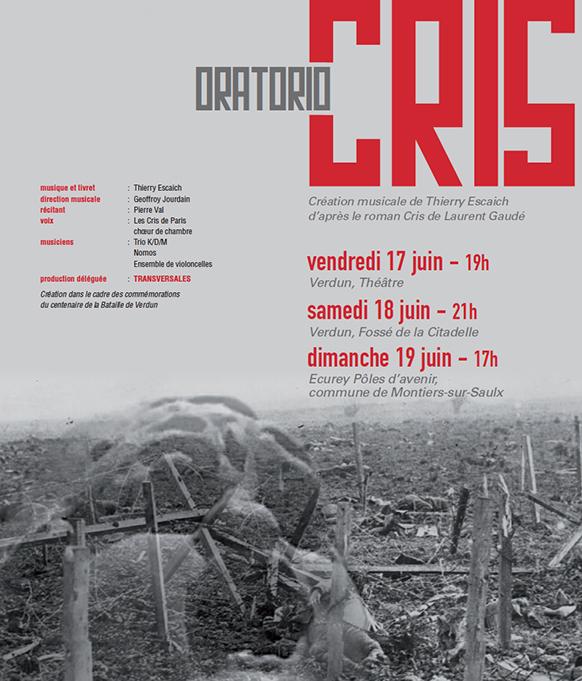2016
Oratorio
39 mn
• Text : after Cris, novel by Laurent Gaudé.
• World premiere: 17/06/2016, Théâtre, Verdun (France), as part of the centenary celebrations of the Battle of Verdun – Pierre Val (narrator), Les Cris de Paris (chamber choir), Trio KDM (Anthony Millet, accordion – Jean-Baptiste Bonnard & Adélaïde Ferrière, percussions), Nomos (cello ensemble), Geoffroy Jourdain (cond.).
• American premiere: 10/11/2018, Church of St. Luke-in-the-Fields, New York City – Philip Stoddard (narrator), Cantori New York, Mark Shapiro (cond.), Hanzhi Wang (accordion) – translated by Mark Shapiro..
• Scoring: narrator, chamber choir, 8 cellos, 2 percussions, accordion.
• Publisher: Gérard Billaudot.
